Setting up voice-controlled lights is simpler than you think. First, select smart bulbs compatible with your voice assistant (Alexa, Google, or HomeKit). Next, prepare your home by checking Wi-Fi coverage and fixture compatibility. Install the bulbs safely with power off at the breaker. Connect them to your voice platform using the manufacturer’s app. Finally, create custom commands and scenes for different activities. The complete step-by-step guide below will transform your lighting experience in no time.
Choosing the Right Smart Bulbs for Your Voice Assistant
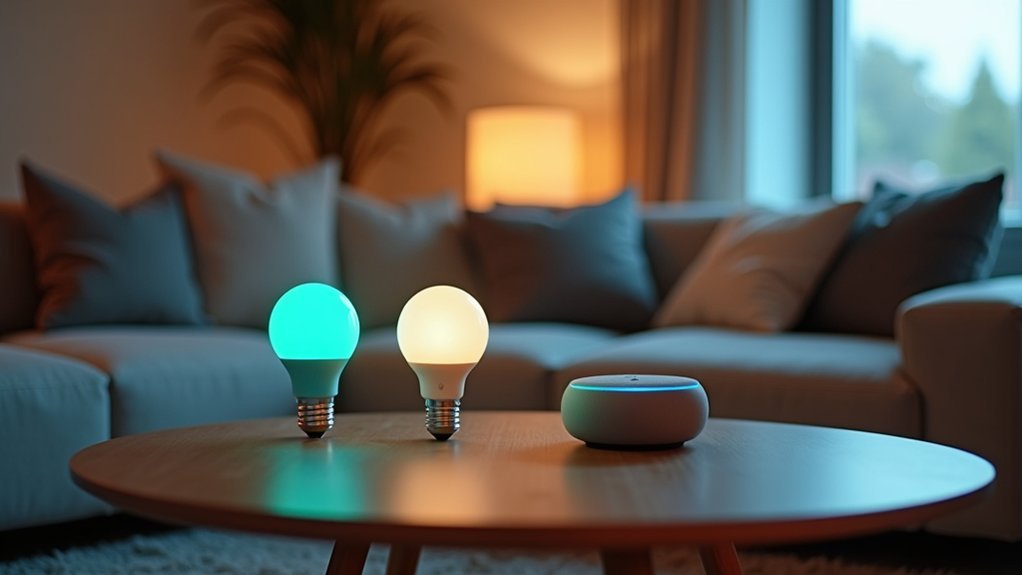
Success with voice-controlled lighting begins with selecting compatible smart bulbs. Check if your preferred bulbs work with Alexa, Google Assistant, or both before purchasing.
Your smart lighting journey starts with compatibility. Choose bulbs that speak your assistant’s language before bringing them home.
If you’re an Apple user, look specifically for HomeKit compatibility in brands like Philips Hue and Yeelight.
Consider your budget carefully. Entry-level options from Govee or Sengled offer basic functionality at lower prices, while premium brands like Philips Hue deliver superior performance and reliability. Remember that most bulbs work with IFTTT for automation, except the Merkury brand.
Many mid-range bulbs like Yeelight strike a good balance.
For hub-free setup, choose Wi-Fi connected bulbs. However, some systems require hubs (like the Hue Bridge) for full voice control functionality.
Don’t forget to verify brightness (800+ lumens recommended) and color capabilities if you want vibrant lighting scenes.
Preparing Your Home for Smart Light Installation
Before diving into smart light installation, proper preparation of your home environment guarantees smooth setup and reliable performance. Start by checking your Wi-Fi coverage in all rooms where you’ll install smart lights, confirming strong connectivity. Verify your existing fixtures are compatible with your chosen smart bulbs and that electrical wiring meets safety standards. Having a smart hub ready will ensure your bulbs can connect to your home network properly.
| Preparation Area | What to Check | Why It Matters |
|---|---|---|
| Electrical | Wiring & outlets | Prevents hazards |
| Network | Wi-Fi strength | Confirms reliability |
| Fixtures | Bulb compatibility | Avoids frustration |
Turn off power at the circuit breaker before installation and download manufacturer apps in advance. Consider creating a dedicated network for your smart devices to enhance security. Keep installation areas clear and organized for efficient setup.
Installing and Powering Your Voice-Activated Lighting
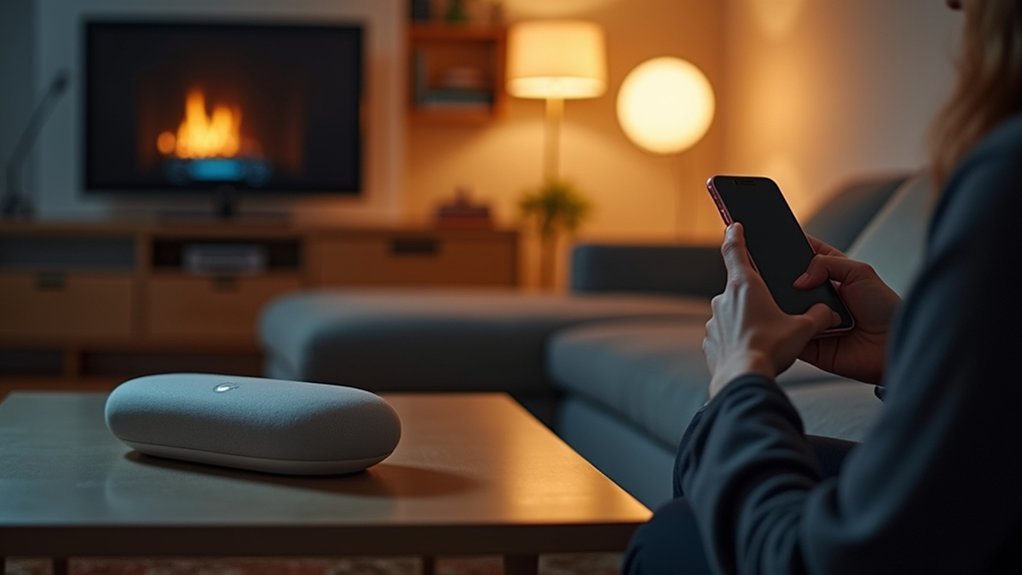
Once you’ve prepared your home, installing voice-activated lighting requires careful attention to power requirements and proper wiring techniques. Most smart bulbs connect to existing fixtures, while DIY setups may need dedicated power supplies and relay boards.
For a successful installation:
- Turn off power at the breaker before handling any wiring to guarantee safety.
- Install smart bulbs by simply replacing conventional bulbs, or connect relay boards to control existing fixtures. After installation, download the manufacturer’s app and create an account to begin the setup process.
- Connect power supplies properly—guaranteeing separation between low-voltage control circuits and high-voltage AC components.
- Test your system after restoring power to verify voice commands work with your chosen platform (Alexa, Google Assistant, or Siri).
Always follow electrical codes and use proper enclosures for components to prevent overheating and electrical hazards.
Connecting Smart Bulbs to Your Voice Control Platform
Connecting your smart bulbs to a voice control platform represents the essential bridge between hardware installation and hands-free operation.
Start by downloading your bulb’s companion app and creating an account connected to your home Wi-Fi.
Open your voice assistant app (Google Home or Alexa) and select “Add Device.” Choose your smart bulb brand from the list and follow the prompts to link accounts.
Verify your bulb is in pairing mode—usually indicated by blinking—during this process.
Assign your bulb to a specific room and give it a distinctive name like “bedside lamp” for clearer voice commands.
If your bulbs require a hub, set this up first according to manufacturer instructions.
For seamless operation, confirm all devices share the same Wi-Fi network. Remember to enable the corresponding Smart Life skill in your voice assistant’s app to establish full functionality.
Creating Custom Voice Commands and Lighting Scenes
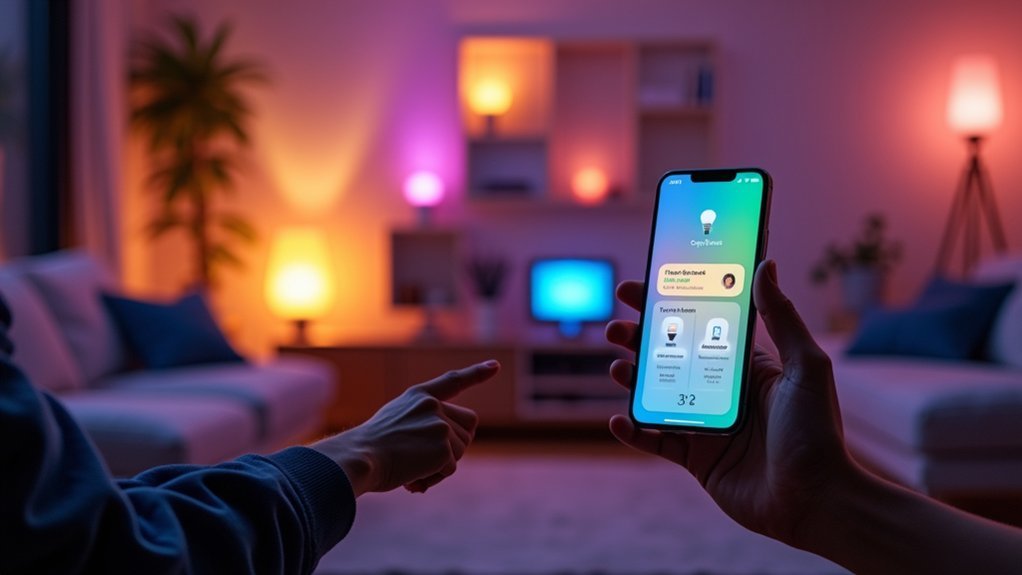
With your bulbs now connected, you can access the full potential of voice-controlled lighting by creating custom commands and scenes.
Your voice assistant app allows you to design personalized experiences for different activities and moods throughout your home.
- Create routines – Set up commands like “Movie time” or “Good morning” to trigger specific lighting configurations. From the home screen, select the plus icon to begin setting up routines.
- Customize trigger phrases – Design unique voice commands that feel natural and are easy to remember.
- Build lighting scenes – Adjust brightness, color, and effects for different activities, then save them for quick activation.
- Integrate with other devices – Combine your lighting commands with other smart home features for thorough automation.
You can manage these settings remotely, ensuring your home remains perfectly lit even when you’re away.
Frequently Asked Questions
Do Smart Bulbs Work During Internet Outages?
Yes, most smart bulbs work during internet outages, but with limited functionality. You’ll lose app control and voice commands, but you can still use physical switches or bulbs that support Bluetooth or Zigbee connections.
Can I Use Voice-Controlled Lights With a Mesh Wi-Fi System?
Yes, you can use voice-controlled lights with mesh Wi-Fi systems. They’re actually ideal partners—mesh networks provide better coverage for your smart lights, and many mesh systems even integrate voice assistants for seamless control.
Will Smart Bulbs Increase My Electricity Bill Significantly?
No, smart bulbs won’t increase your electricity bill considerably. They’re actually more energy-efficient than traditional bulbs, using up to 83% less power. The small standby power consumption is negligible compared to these savings.
Can Multiple Users Control the Same Smart Lighting System?
Yes, multiple users can control the same smart lighting system. You’ll need to share a single account, with each person logging in with the same credentials on their own devices for seamless access.
Are Voice-Controlled Lights Secure From Unauthorized Access?
No, voice-controlled lights aren’t completely secure. They’re vulnerable to firmware exploits, authentication weaknesses, and voice spoofing attacks. Ultrasonic commands can even control your devices silently. Always update firmware and use strong network security.
In Summary
You’ve now transformed your home lighting system into a voice-controlled experience that’s both convenient and impressive. With your smart bulbs connected to your preferred voice assistant, you’re free to adjust brightness, change colors, and activate custom scenes without lifting a finger. Don’t stop here—experiment with routines that combine lighting with other smart devices for a truly automated home that responds to your every command.

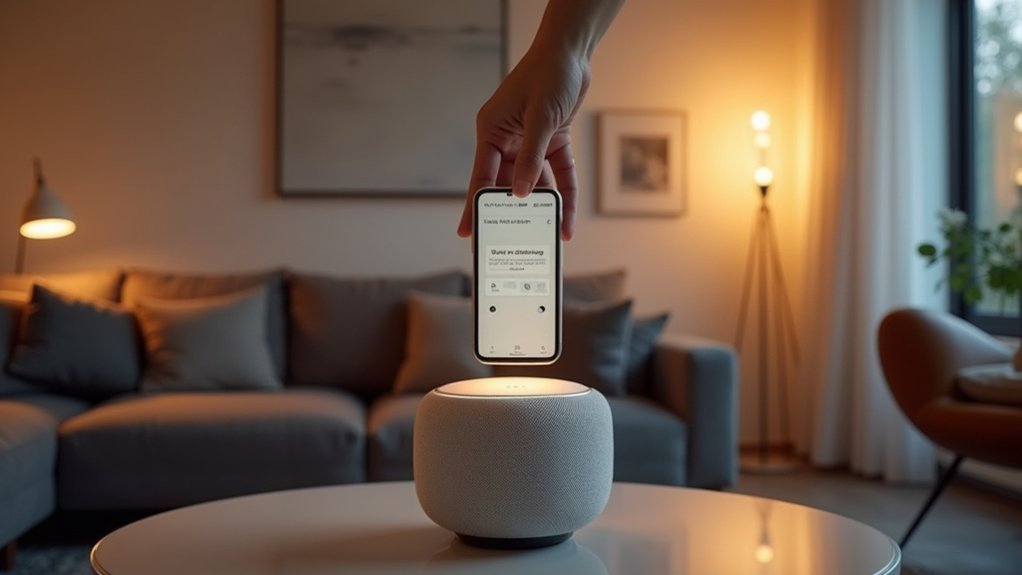
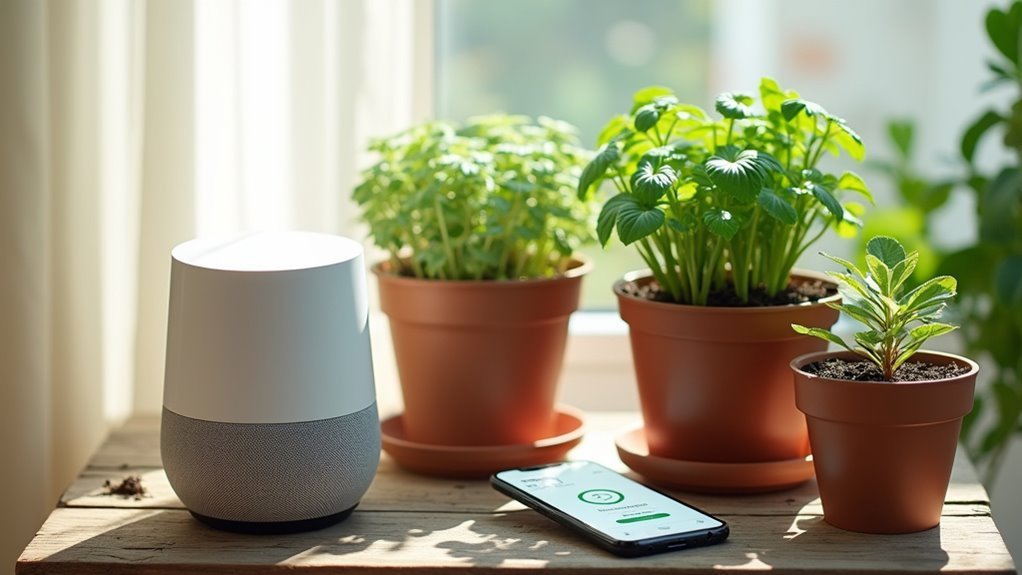
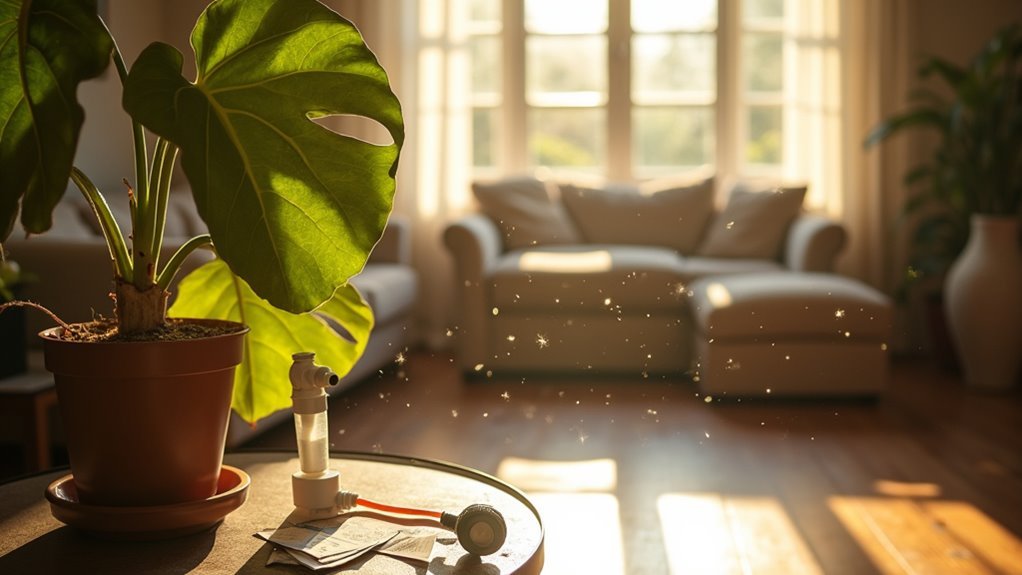
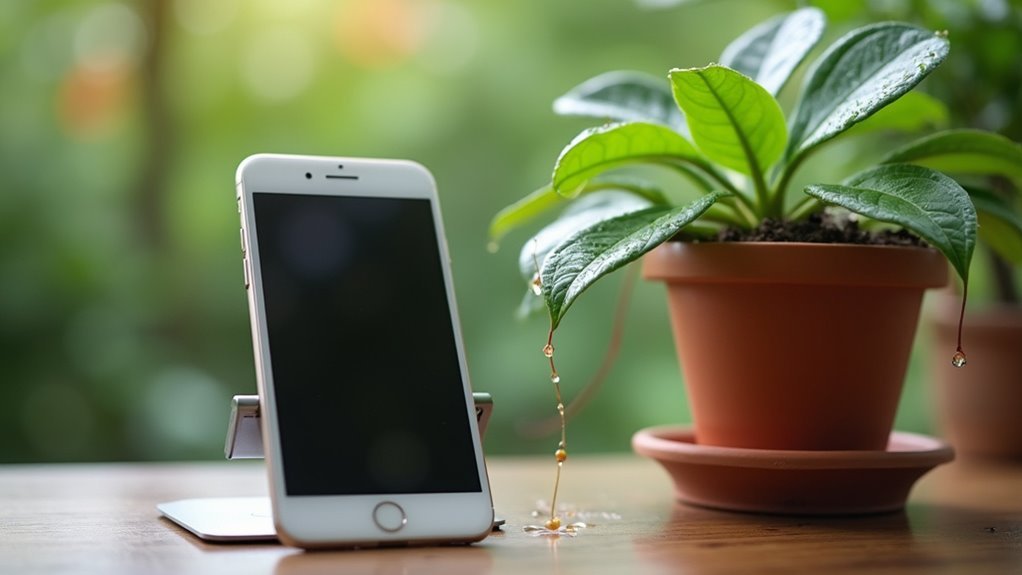
Leave a Reply